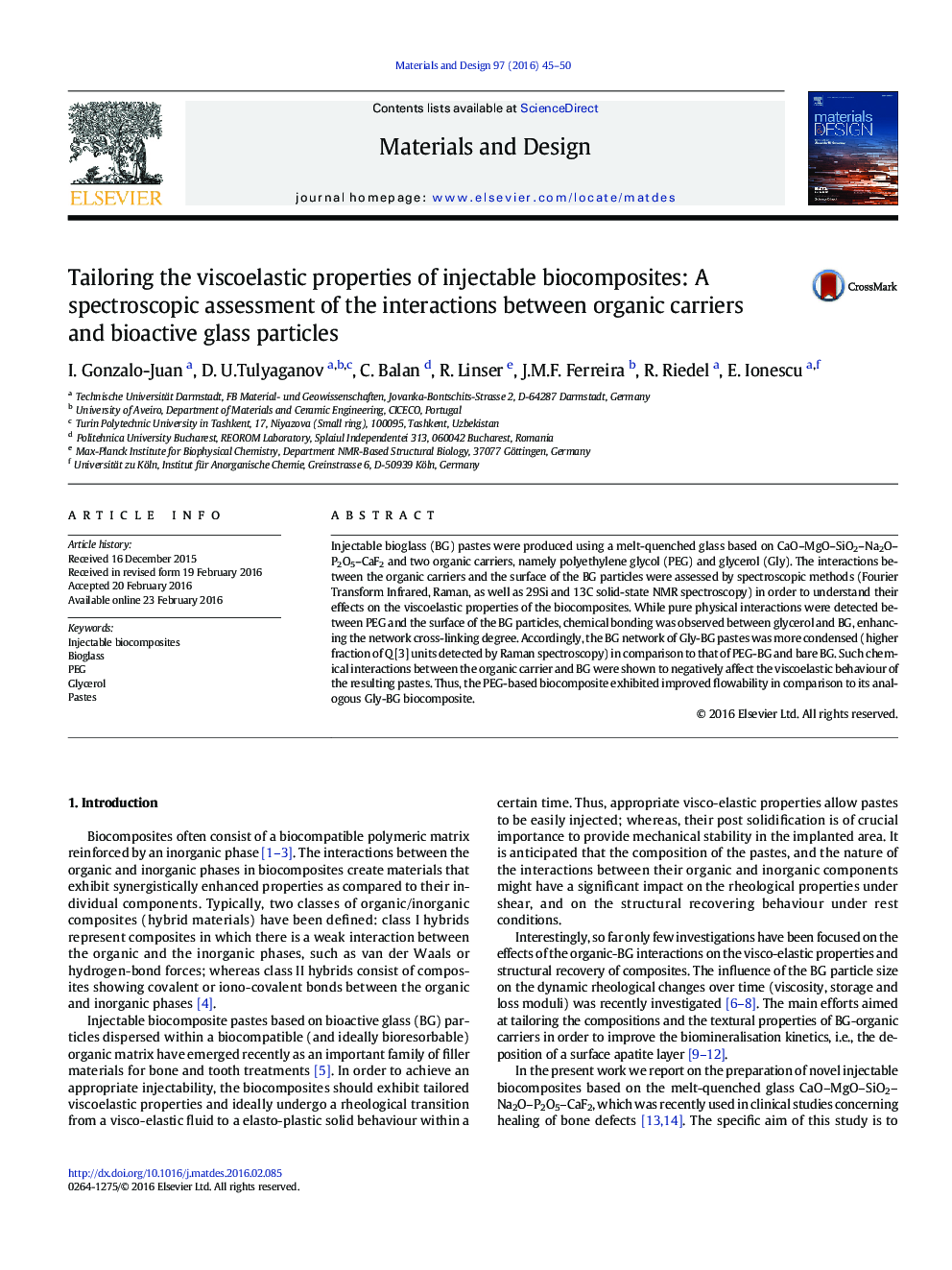| Article ID | Journal | Published Year | Pages | File Type |
|---|---|---|---|---|
| 828050 | Materials & Design | 2016 | 6 Pages |
•Novel injectable biocomposites intended for healing bone defects have been investigated.•Spectroscopic analysis indicated the occurrence of chemical bonding between the surface of bioactive glass particles and glycerol.•Rheological investigation of the as-prepared hybrid samples revealed that the studied biocomposites exhibit pseudo-plastic behaviors, more accentuated in the case of glycerol based paste.•Polyethylene glycol based biocomposite appears as a worthy candidate as injectable bone filler.
Injectable bioglass (BG) pastes were produced using a melt-quenched glass based on CaO–MgO–SiO2–Na2O–P2O5–CaF2 and two organic carriers, namely polyethylene glycol (PEG) and glycerol (Gly). The interactions between the organic carriers and the surface of the BG particles were assessed by spectroscopic methods (Fourier Transform Infrared, Raman, as well as 29Si and 13C solid-state NMR spectroscopy) in order to understand their effects on the viscoelastic properties of the biocomposites. While pure physical interactions were detected between PEG and the surface of the BG particles, chemical bonding was observed between glycerol and BG, enhancing the network cross-linking degree. Accordingly, the BG network of Gly-BG pastes was more condensed (higher fraction of Q [3] units detected by Raman spectroscopy) in comparison to that of PEG-BG and bare BG. Such chemical interactions between the organic carrier and BG were shown to negatively affect the viscoelastic behaviour of the resulting pastes. Thus, the PEG-based biocomposite exhibited improved flowability in comparison to its analogous Gly-BG biocomposite.
Graphical abstractFigure optionsDownload full-size imageDownload as PowerPoint slide
